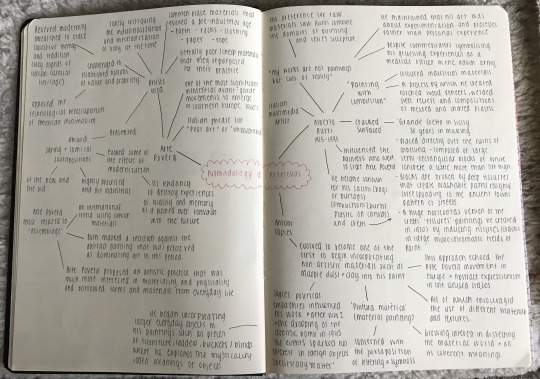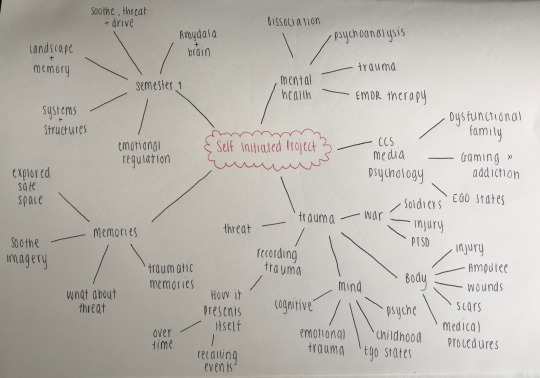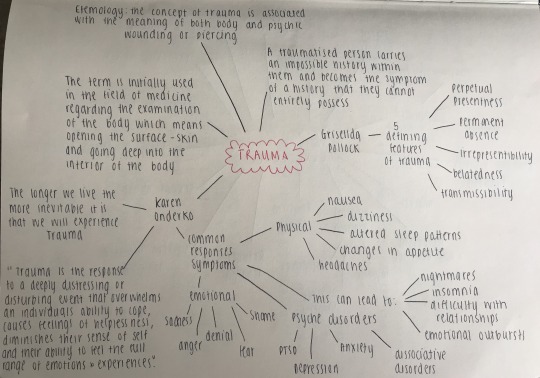Photo
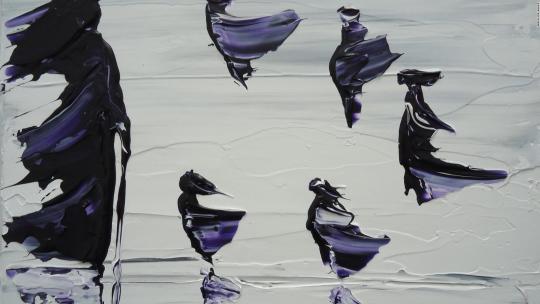
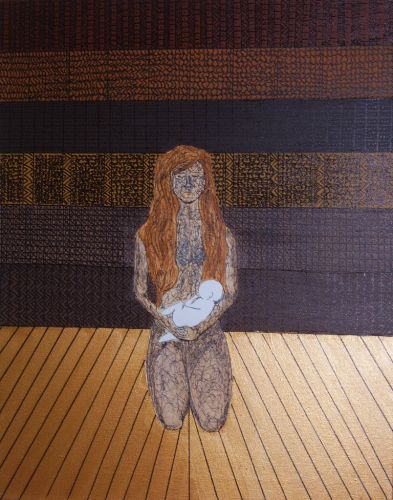

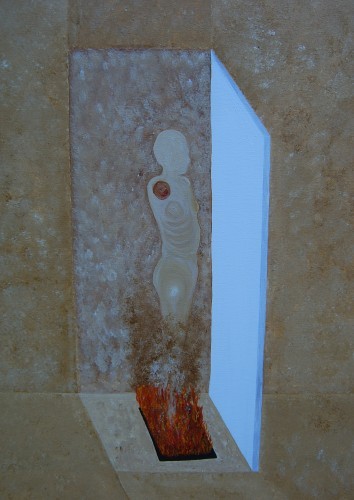
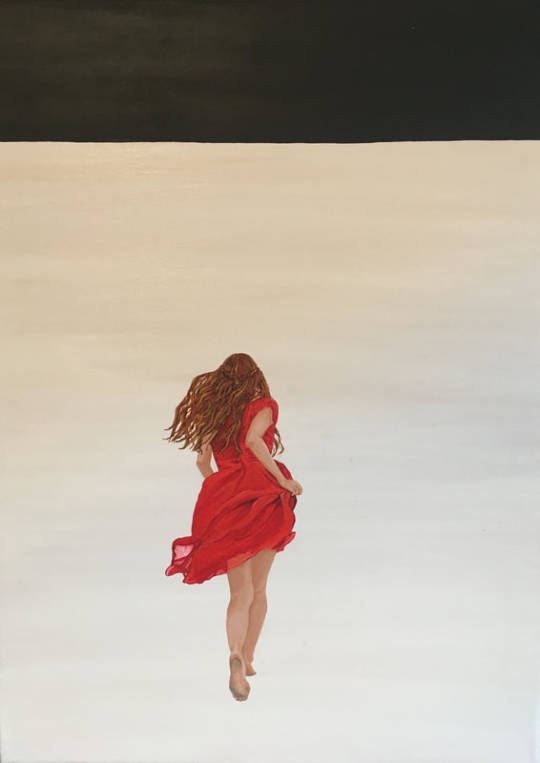




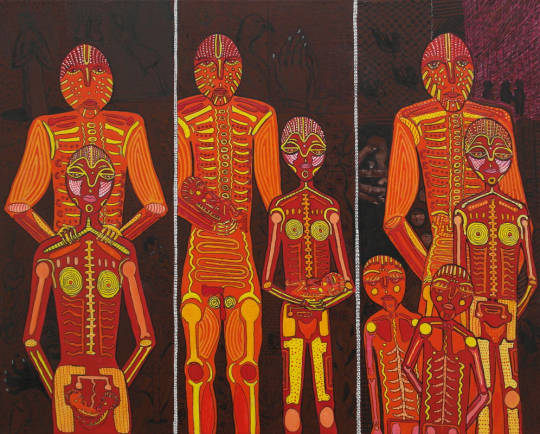
Kim Noble
I am in awe of the diversity between every single one of these art style.
3 notes
·
View notes
Text
Kim Noble
South Londoner Kim Noble has multiple personalities, 14 of whom are artists with their own distinct styles. Next month, their work will hang alongside Salvador Dali, Francis Bacon and Andy Warhol in a powerful new show about mental health.
https://www.huckmag.com/art-and-culture/art-2/the-woman-who-shares-a-body-with-14-different-artists/
https://www.theguardian.com/lifeandstyle/2011/sep/30/kim-noble-woman-with-100-personalities
“Kim suffered extreme and repeated abuse. And at this point her mind, traumatised beyond endurance, shattered into fragments, forming myriad separate identities. The breaks were clean: most of the principal personalities had no memories of abuse and no flashbacks. Thus she was protected from what had happened.”
“She takes me to her tiny, paint-spattered art room. It's a revelation. Since Patricia began art therapy in 2004, more than a dozen personalities have started to paint regularly and prolifically. The styles, palettes and skill levels vary enormously. Some paintings are abstract, others more representational. The paintings of Ria Pratt, a very disturbed personality, are naive little cameos with whips and cages and wispy stick figures, with the children being raped or abused painted in lighter colours.”
“Dr Valerie Sinason
, the psychotherapist who initially treated Kim, describes DID as "a brilliantly creative survival device". She is full of admiration for how some of her patients' personalities, having hived off the traumatised parts of their mind, can forge ahead. She believes that, like people with Asperger's, they can sometimes demonstrate exceptional powers. "They can go further than normal people because they are not held back."
youtube
0 notes
Photo
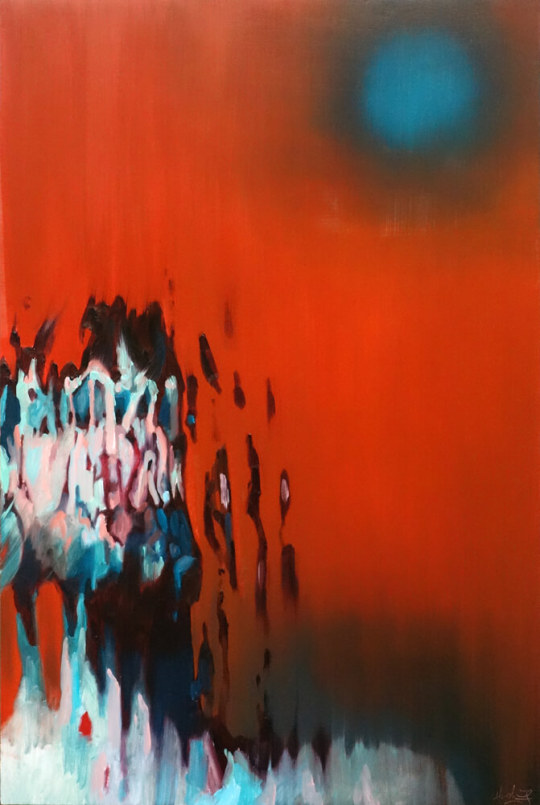
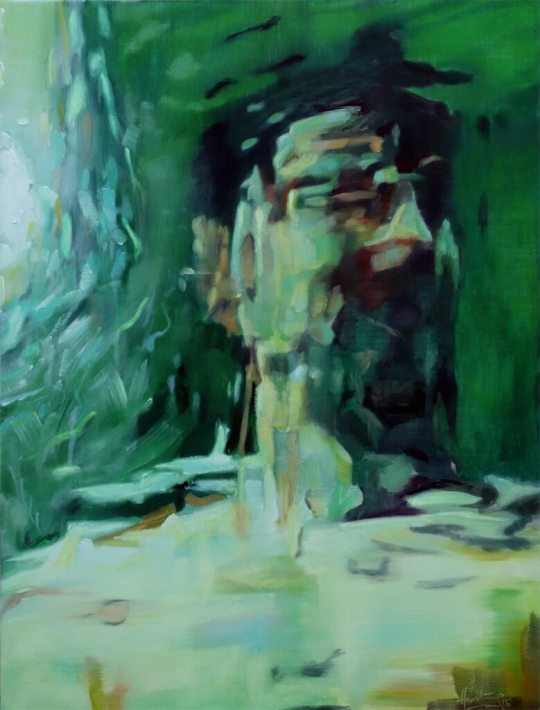

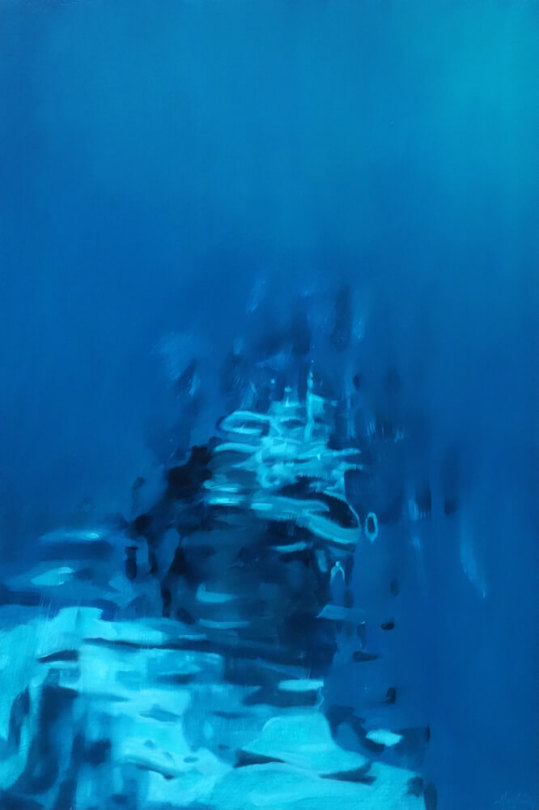

George Harding Portraits
His self portraits often distorted in rippled glass and misted mirror serve as a metaphor for reality and what lies beyond our physical selves.
As part of my Trauma research I have found that Traumas post-presence in a persons life can make them feel out of touch with reality and trigger states of Dissociation.
0 notes
Text
Memory Laundering Exhibition
youtube
https://www.dublin.sciencegallery.com/trauma/exhibits/memory-laundering
The installation invited visitors to write down one good memory and one bad memory of the past week as-well as writing down how much sleep they have gotten. These memories are then locked away temporarily in a safety deposit box and the visitors are given the key lanyard to wear while they walk around the exhibition. Meanwhile those involved in the exhibition go behind the scenes and edit these memories that were submitted.
“What if you could alter your traumatic memories? Episodic memory — the memory that captures your ‘what, where, when’ moments — is complex. Every time you recall something, you’re pulling information from different regions of your brain, all combining to reconstruct what happened and how you felt about it. But when you recall something, you’re not replaying the original recording — it’s more like an artist’s impression of the last time you recalled it. Each time you recall it, that memory is altered — moulded by how you’re feeling or what you’re doing at the time. That’s because the brain is a living circuit and its neurons can form new connections all the time. This happens without us knowing it.”
“Currently, researchers are trying to understand the fundamental nature of memory by programming brain cells to respond to light, allowing them to target particular memories by shining lasers into the brain. The Tonegawa Lab at Massachusetts Institute of Technology (MIT) have shown that it’s possible to create false memories, change a traumatic memory into a happy one, and retrieve a memory that has been forgotten. They’ve only done this with mice so far, but in a future where we will likely be able to edit human memories, should we?”
As part of the exhibition they also want to ask visitors if they would prefer to remember traumatic memories because they shape them as a person or would they rather forget it because its too painful.
These considerations are very insightful for me when exploring my concept of threat and trauma as memory forms a large part of this.
0 notes
Text
Jean Fautrier
Post-war Artist : Trauma
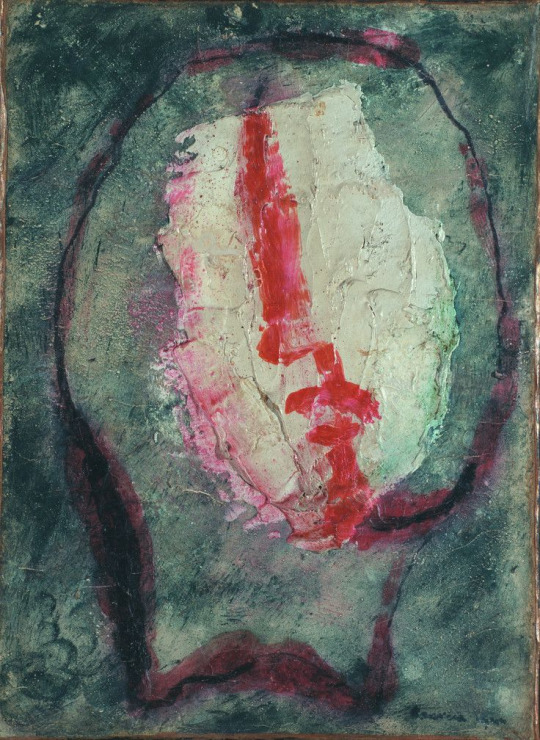
Jean Fautrier Head no.20 (Tête d'otage) 1944
Les Otages is a series of 30 paintings between 1943 and 1945.
The word hostages refers directly to war experience and his own personal trauma.
Textural effects became the main subject. Using a glue-based paint for blends of pigment with transparent and opaque inks, Fautrier composed intricate, luminous harmonies whose impastos and textures induced a certain anxiety.
He himself had been captured by the SS and put in prison. After his release he hid in a sanitorium where nearby he could hear the cries of tortured victims of German atrocities.
This experience informed his work.
He portrayed how tortured victims were treated comparing it to his formless anonymous sculptures.
He used a version of lead in his work that was also used to make cannon shells and gun cartridge ammunition.

Jean Fautrier - Head of a Hostage 1943-44 Lead on marble base
The manipulation of the material of Head of a Hostage, with its layered and scored surfaces, lends the appearance of mutilated flesh to the truncated form. Despite this apparent formlessness, a delicate profile is drawn out of the mass, just as occurs in a number of the paintings of the series. In this way, Fautrier combined elements of figuration and abstraction, conveying both the individuality of the hostages and the amorphous quality of anonymous bodies found in mass graves.
0 notes
Text
Francis Bacon
Post-war artist - Trauma
An Irishman who re-invented himself using the war as a fresh start.
Post-war - he destroyed everything he could find of his work that he had done prior. And he started again much like how the post war world was restarting.
His study after Velazquez 1952 represents suffering pain in The Pope, who some Catholics look up to as the Leader of the Catholic Church. He is someone who is usually serene and peaceful.
It indirectly suggests a time of hardship and collective suffering in Europe.
https://www.independent.co.uk/arts-entertainment/art/great-works/great-works-study-after-velazquez-s-portrait-pope-innocent-x-1953-153cm-x-118-1cm-francis-bacon-8688702.html
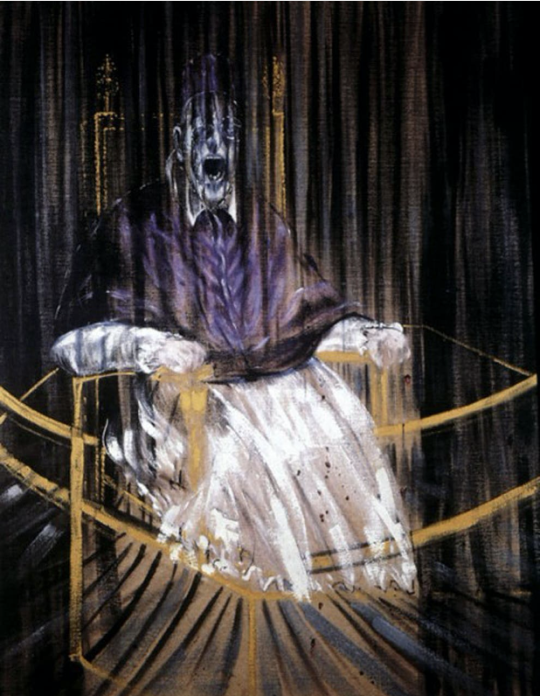
Francis Bacon - Study after Velázquez Portrait of Pope Innocent X , 1953
By the early 1950s Bacon shifted his artistic visions. From various fantastical creeping creatures with over extended necks to his new vision of considering the possibilities of portraiture of an 'unorthodox' kind. The article argues that Bacon did not in fact paint people but that he "painted images of people mediated through a great and often blurry mashing of other images." When we talk about images and Francis Bacon we must acknowledge that many of Bacons images are 'Palimpsests'. A Palimpsest is defined as "something realized or altered but still bearing visible traces of its earlier form." Within any image there is often another image out of which the later image has grown. That is what Bacon has done here.
This painting is based on an image of Velázquezs great portrait of Pope Innocent X. The scream however was never Velázquez. The scream has been snatched from a famous moment in a film by Eisenstein. Bacon has rendered this "near sacred" image to a now "utterly unholy" and "near blasphemous" image. I don’t oppose this and in fact see it as an upgrade.
Bacon was an atheist and actually found his atheism exhilarating. The here and now was all there was and he lived it to the limit. Perhaps he lived it a bit too much due to the fact that he identified as a Sado-Masochist. "Life was an experiment to be lived to its utmost extremities, of pain and rapture - or perhaps it was rapture mediated through pain."
This in mind, it makes sense why Bacon has rendered the Pope the way he did, stripping him of his imperious serenity. His papal throne transforms in front of you in a magical way into a cage like shape. The strokes of paint are described as "desperate clawing". This description sounds about right considering Bacon is putting the Pope through a vigorous impeachment. "The pope is in the throes of becoming trapped inside that which once served to emphasize his hieratic eminence." What once gave the pope solid foundation to lead was now being demolished and taking him down too. His chair is described to be in vigorous motion. "It spreads, It weaves about, It encircles, It whiplashes. It also lacks groundedness, solidity." I really rate this description. It is so visual and captures so much movement and intensity. It creates instability and dizziness as I visualize each of the words combusting together.
The article turns its attention to the infamous Scream. It makes a great comparison of the Popes scream to that of Munchs. In Edvard Munch's The Scream 1893, The Scream becomes its own thing, one that spreads like infection and gains character as it shapes the landscape. The Popes Scream is much more sinister. "This scream is the Popes darkness. It is all that he is. It is what he amounts to in the end, a small black know of humanness." What a statement. One I definitely stand by especially with the ongoing issues the church causes to this date.

Comparison of Velázquez’s Pope (left) to Bacons Pope (right)
youtube
3 notes
·
View notes
Text
Alberto Giacometti
Post War Artists Trauma
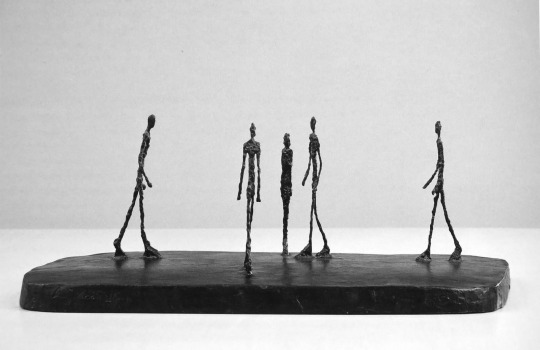
Alberto Giacometti - The city square 1948
After the war he developed a new way of visualising the figure: skeletal, emancipated human beings.
His art was seen as embodying his existentialist ideas of isolation and fragility of human beings in a world without God for Consolation.
It mirrored the intellectual and emotional atmosphere in Europe immediately after WW2.
Whats interesting about this piece is that it mimics a very haunting reality that we now face during the Coronavirus Pandemic. Human beings walking in different directions in a bare city keeping their distance from another with minimal interaction. A trauma of our current times.
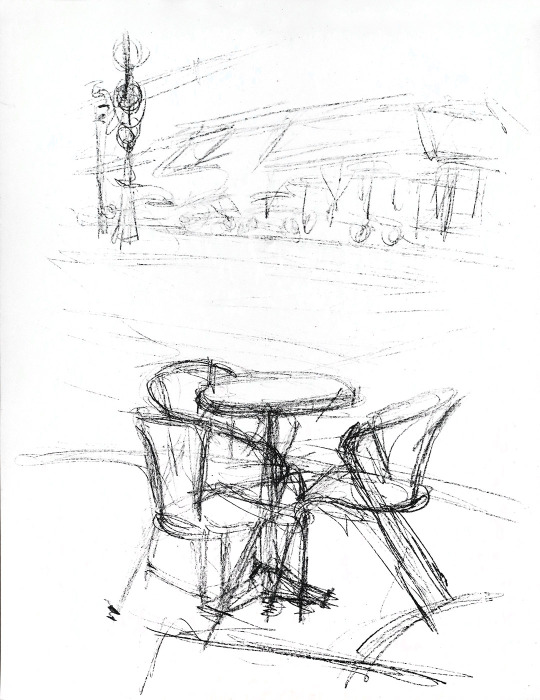
Paris sans fin - Plate 125 1958-1965 Lithograph
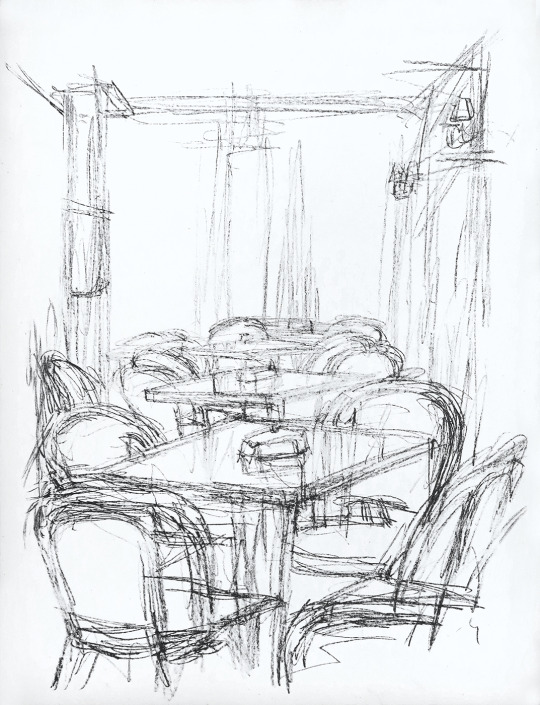
Paris sans fin - Plate 86 1958-1965 Lithograph

Paris sans fin - Plate 56 1958-1965 Lithograph

Mère de l'artiste assise 1965 Lithograph
After looking through some of Giacomettis Lithographs from his series of drawings inspired by the spaces and energies of Paris It got me thinking about some of the isolation he captured and how it mimics our world today.
As you can see he depicts empty cafes and then isolated individuals in the works ive included here. These are the same situations we are surround by today during the Pandemic. A desolate hospitality sector and humans forced to withdraw from human interaction enforcing time spent in isolation.
0 notes
Text
Henry Moore
Post War Artists - Trauma

Henry Moore - Underground Drawings 1940-41
Responded to the war by portraying the trauma.
He depicted what it was like for the civilians who took shelter in the London Underground during the London Blitz of 1940.
His wax-resist colour drawings depicted the situation of an endless tunnel lined with people in place of trains.
His focus was more so on the situation as opposed to portraiture.

Henry Moore - Underground Drawings 1940-41
Henrys depiction of the London Underground highlights the devastation caused by the bombings and gives us an indication as to the mass amount of civilians who hid fearing for their lives.
During the London Blitz of 1940, civilians took shelter in the London Underground as so many homes were being bombed and families killed.
The long endless tunnel lined with people seems infinite much like the numbers killed during the event.
Moore directly portrays this very real bombing in his work
1 note
·
View note
Photo
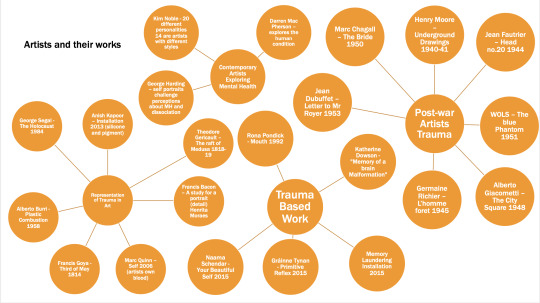
A digital mindmap I created grouping different artists together based on their works
0 notes
Text
Anselm Kiefer
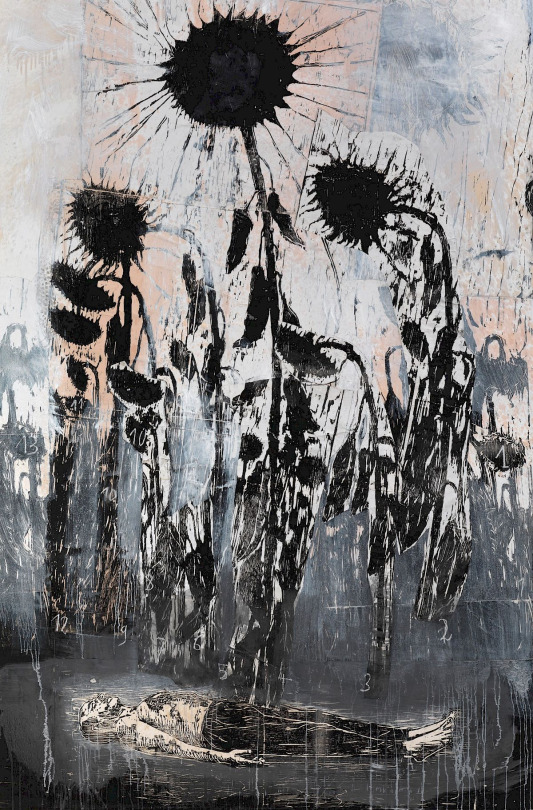
Anselm Kiefer - Hortus Conclusus 2007 - 2014 , 380x255cm Collage of woodcuts on canvas with acrylic and shellac
Anselm is a German painter and sculptor
His work incorporate materials such as straw, ash , clay, lead and shellac.
His works are characterised by an unflinching willingness to confront his cultures dark past and unrealised potential.
Kiefer grew up in the aftermath of bombed houses, something which made a profound impact on him.
His work
He uses Shellac, a material that keeps changing, in colour over time.
Fire is a constant in his work, It destroys and purifies at the same time and it creates new things like they arise from the ashes.
His work is very much about metamorphosis and transformation a constant process of change.
This concept applies to his choice of materials too as they too experience change as he uses them.
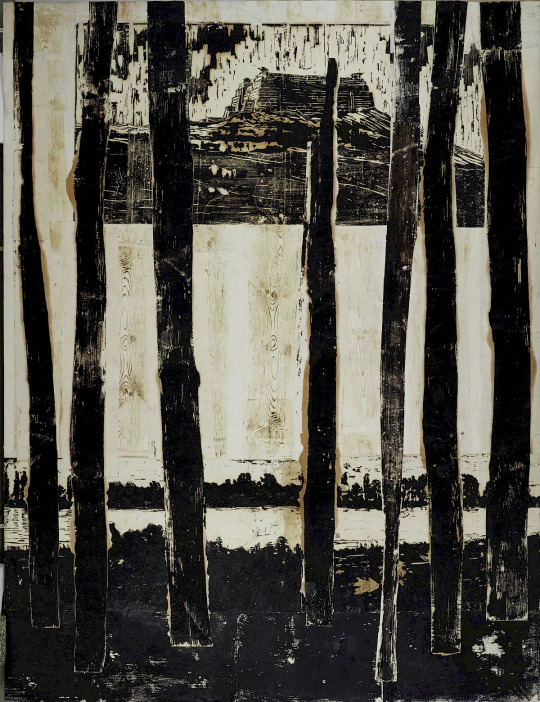
Anselm Kiefer The Rhine 1993, 374x284.5cm Collage of woodcuts on canvas with acrylic and shellac
After the war he took more interest in woodblock.
He would carve one portrait per day into the woodblocks
Generally he tends to join the individual portraits together.
In the Rhine he takes advantage of the material itself.
He uses actual planks by soaking them in colour and slapping them on paper. He the cuts them out and uses them for collage on paper
youtube
4 notes
·
View notes
Text
Antoni Tapies

No doors or windows 1993
Antoni Tapies evolved to become one of the first to begin incorporating non artistic materials such as marble, dust and clay into his paint.
This approach echoed the Arte Povera movement in Europe and Abstract Expressionism in the United States.
All of which encouraged the use of different materials and textures.
Tapies began encoporating larger everyday objects in his paintings such as pieces of furniture, ladders, buckets, blinds and he explored the mysticality coded meanings of Objects.
Tapies political empathies influenced his work and after WW2 and the dropping of the atomic bomb in 1945, these events sparked his interest in foreign objects and specifically matter.
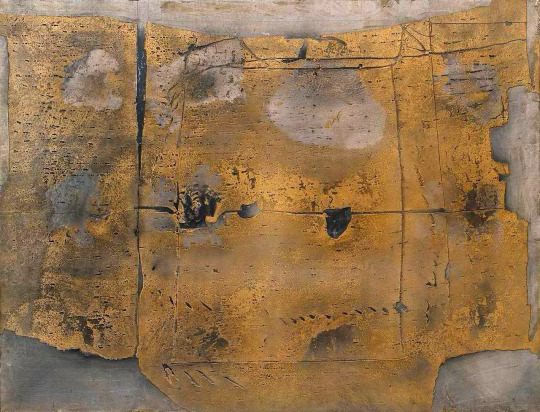
Antoni Tapies Great Painting 1958
Oil with marble dust and sand on canvas
(79 x 103 1/2 inches (200.7 x 262.9cm)
‘Pintura Materica’ - Material Painting
By calling attention to this seemingly inconsequential matter (marble dust and sand) , he suggested that beauty can be found in unlikely places.
In Great Painting, an ocher skin appears to hang off the surface of the canvas; violence is suggested by the gouge and puncture marks in the dense stratum.
1 note
·
View note
Text
Alberto Burri
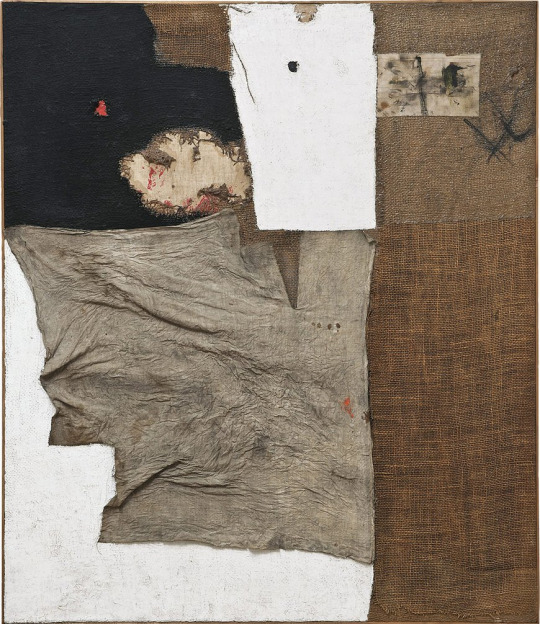
Alberto Burri Sacco (sack) 1952
Alberto Burri was an Italian Multimedia Artist.
His preference for raw materials saw Burri combine the domains of painting and relief sculpture.
“My works are not paintings but cuts of reality.” - Burri
He maintained that his art was about experimentation and processes rather than personal experience.
Although it is also fact that he endured gruelling experiences as a medical officer in the Italian army.
“Painting with combustion” involved coloured materials. A process by which he created torched wood veneers, welded steel reliefs and compositions of melted and charred plastic.
He became known for his Sacchi (bags or burlaps) , Combustion (burnt plastic on canvas) and Cretti.
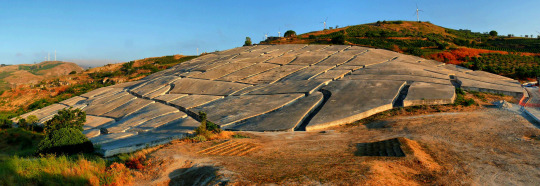
Grande Cretto (1984-2015) - This was Burris Monumental land art project in Sicily which took 30 years in the making.
It was placed directly over the ruins of Gibellina.
It was composed of large semi-rectangular blocks of white concrete a little over 5ft high.
The blocks were broken by deep fissures that create walkable paths roughly corresponding to the ancient towns pattern of streets.
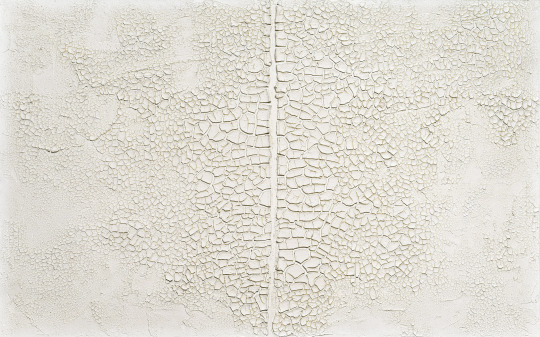
Alberto Burri Grande bianco (Large White), 1971. Acrylic and PVA on Celotex, 126 x 201.7 cm
The Cretti are made with a traditional artist’s pigment, zinc white, which forms a brittle paint film prone to cracking if not mixed with proper amounts of binder.
In some respects the Cretti are self-making artworks that “perform” their compositions as they dry.
I really liked how Burri used his knowledge of the mediums he used to create these outcomes. His work, especially Cretti, has some elements of destruction but also creation born out of chemicals not reacting how they should.
These cracked surfaces relate back to my project and the fracturing effects of trauma on an individuals memory and world view.
0 notes
Text
Arte Povera
Italian phrase for “Poor art” or “Impoverished”. It is one of the most significant influential avant-garde movements to emerge in Southern Europe in the 1960s.
Artists used literally poor and cheap materials that they repurposed for their practice. They used common place materials that evoked a pre-industrial age. Such as earth, rocks, clothing, paper and rope.
Artists subtly critiqued the industrialisation and mechanisation of Italy at the time. They challenged to establish notions of value and property. Artists believed that modernity threatened to erase collective memory and tradition and they opposed the technological pro occupation of American Minimalism.
Artists presented absurd, jaring and comical juxtapositions of the old and the new and of the highly processed and pre industrial. Artists evoked some of the effects of modernism and its tendency to destroy experiences of locality and memory as it pushed ever forwards into the future.
Arte povera is most related to ‘Assemblage’, which is an international trend using similar materials. They both marked a reaction against the abstract painting that was perceived as dominating art in this period.
Arte Povera proposed an artistic practice that was much more interested in materiality and physicality and borrowed forms and materials from everyday life.
Artists who contributed to Arte Povera:
Alberto Burri
Antoni Tapies
Anselm Kiefer
4 notes
·
View notes
Text
Artist Research
Lucio Fontana
Lucio Fontana was born on February 19, 1899, in Rosario de Santa Fé, Argentina. He worked as a sculptor in his father's studio for several years before opening his own. The year 1949 marked a turning point in Fontana's career; he created his first series of paintings in which he punctured the canvas with buchi (holes), and his first spatial environment, a combination of shapeless sculptures, fluorescent paintings, and black lights to be viewed in a dark room. He was also famously known as the founder of Spatialism. He was best known for his monochrome canvases known as Concetti Spaziale that he would cut or puncture, leaving distinctive gaping slash marks and holes that filled the finished work with an almost violent energy. It is also notable to mention that Fontana volunteered for the Italian army during World War I, serving from 1916 to 1918. He reached the rank of second lieutenant in the infantry regiment and was discharged from service with a silver campaign medal after suffering an arm injury. This is important when looking at my concept because it shows that there is a history of Traumatic experience in Fontanas life.
It is important for me to look at this artist because his name is now synonymous with ‘cuts’ as he is best known for his distinctive marks made into canvases as opposed to onto them. He assaulted his canvas puncturing and slashing them creating minimal yet powerful pieces. When I was thinking about traumas I thought about how Fontana inflicted trauma onto his canvases. This takes my project in a new direction which looks towards representing trauma differently and like Fontana through inflicting it using art as the medium. There is no story, no history or reason, it is the act of slashing and puncturing that captured my attention and the results are mesmerising yet sometimes hard to look at without feeling a sense of threat.
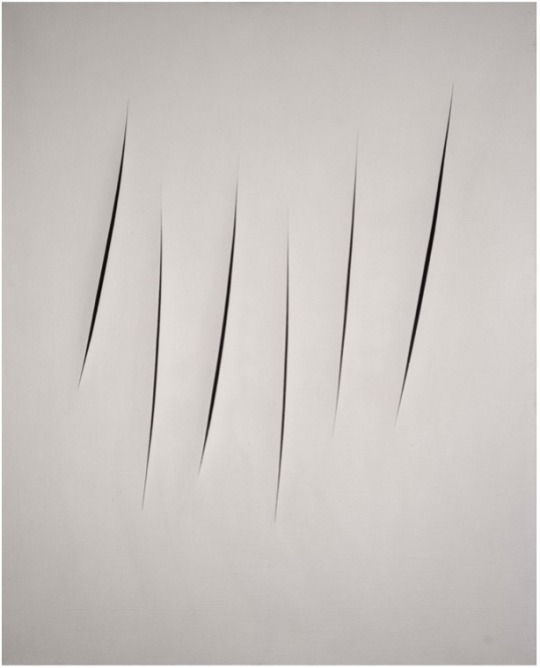
Spatial Concept, Expectations 1965
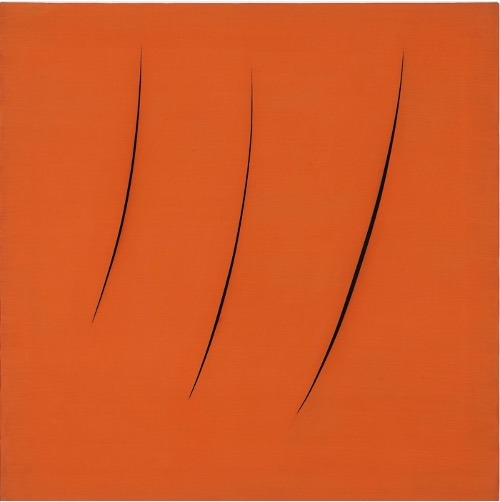
Spatial Concept, Expectations 1959
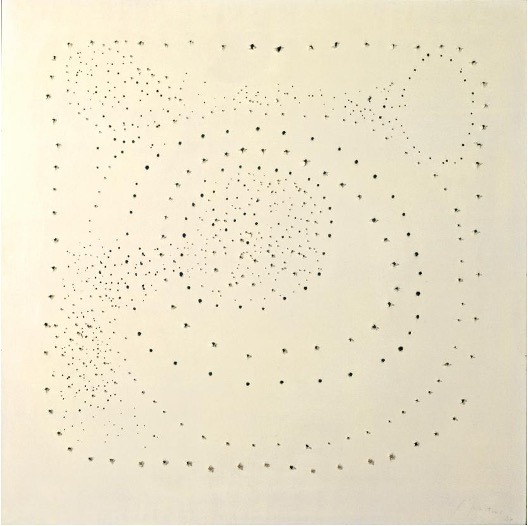
Spatial Concept 1949

1 note
·
View note

